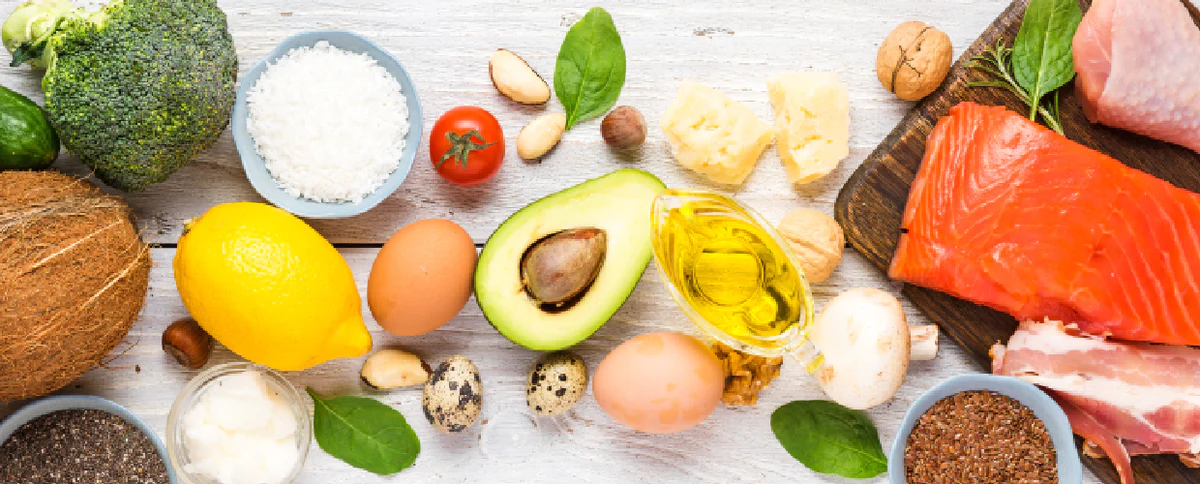7 Sustainable Keto Hacks Every Athlete (Diet or No Diet) Can Benefit From

Keto is the famous "in" diet for weight loss. Many athletes use it temporarily as an effective reset to morph their bodies into fat-burning machines and drop unwanted pounds fast. That said, it’s generally not sustainable long-term, especially if you’re in training mode and need more carbs to perform at your best and crush workouts once you've reached your desired weight.
Here's the thing: the low-carb keto diet restricts carb intake to about 25 grams of net carbs a day, but even if you're not keto, you can still snag a few helpful, sustainable hacks that value to pretty much any healthy eating plan. (Especially when it comes to mindful food intake as you finesse your fitness lifestyle.)
We checked in with Seattle-based foodie Ginger Hultin, MS, RDN, and owner of Champagne Nutrition® and author of Anti-Inflammatory Diet Meal Prep for her best, Spartan-worthy keto diet tips that apply to most endurance athletes.
Related: How to Get Started on the Ketogenic Diet
Keto Diet Tips Relevant to Pretty Much Every Athlete
1. Don't Lose the Leafy Greens

Many keto dieters swap potatoes and starches for leafy greens, and it’s wise to maintain that even after following the diet for a period and resuming "regular" eating—whatever that means for you. Maximize your green leafy veggies, which are high in protein, antioxidants, fiber, iron and magnesium for better gut health and digestion, heart health and muscle recovery.
“For most people on a ketogenic diet, the only carbohydrates they'll be able to fit into the diet are from non-starchy vegetables,” says Hultin, but “these provide valuable fiber (to keep that digestion normalized!) and nutrients for athletes, so make sure to eat foods like spinach, cabbage and arugula daily before your race.” Add them to grain bowls or put the greens in a smoothie for post-training recovery on the spot.
2. Add in Herbs and Spices

Add in anti-inflammatory, keto-friendly herbs and spices, rather than using excess sugar or salt for flavoring. “Training for a big race can cause inflammation in the body so adding in grated ginger or turmeric, or sprinkling a dish with fresh cilantro or parsley is a way to boost cooling antioxidants in the diet,” says Hultin.
Plus, it cuts back on the sugar, sodium and calories that can come with other types of seasonings and sweeteners that those not on keto might enjoy. Use herbs and spices on eggs, in yogurt or oat bowls, smoothies, chicken and beef dishes, fish tacos and more.
Related: Get Off the Crack: 8 Ways to Cut Sugar from Your Diet
3. Consider a Multi-Vitamin

“The ketogenic diet cuts out nutrient-rich foods like whole grains and beans so some people may benefit from the added nutrients in fortified foods or a multivitamin,” says Hultin. And while you may not be on keto anymore, you could still be missing the requirements you need from poor food pairings or inconsistency with meals.
Talk to your doctor or dietitian about it to see if this would be helpful while you train. If so, have one a day to stay balanced and adequately nourished.
4. Be Careful With Protein Powders

Choose your protein powder carefully—not all are equal. If you add protein to smoothies or foods as part of your training preparation, read the labels very carefully as some protein powders come along with more carbohydrates and sugar than is needed. (Which may make your smoothie more dessert-like instead.)
“Whey and collagen are popular but some plant-based proteins like pea and hemp can also meet the low carb criteria,” says Hultin. Once you're off keto, you don’t need to be super low-carb, but it’s a good idea to go for powders that are still low(er) on the carb and sugar end.
5. Don't Skimp On Healthy Fats

While keto demands 80 percent of food intake to be fat and you won't need to be eating that much fat, make sure you're eating healthy fats over trans and saturated fats. “Avocado is a staple on a ketogenic diet, as are heart healthy oils like olives and olive oil given their high fat content,” says Hultin. They're also helpful for muscle recovery while you’re training, she says.
To be strategic about your fat intake, lower your portion size to that of a normal diet, but keep avocado, nuts and seeds, olive oil and other healthy fat sources plentiful.
Related: This Lesser-Known Fat Will Actually Increase Your Metabolism
6. Avoid Added Sugars

When you want something sweet, you can look for keto-approved options at your grocery store. Go for natural sugar, from fruit for example, or opt for brands that use stevia, erythritol or monkfruit as healthier sweetener options over added sugar. "Lily’s Sweets is a favorite of mine, personally, and I will enjoy their low-sugar chocolate bars over other kinds at the store just to keep my added sugars and carbs as low as I can when I am indulging," says Hultin.
7. Meal Prep in the Week

Keto dieters love meal prepping as it keeps mealtimes simple and makes planning ahead easy. No temptation or binging on the bad stuff. Thinking about your nutrition in advance (keto or no keto), you'll find you eat healthier meals and snacks overall, you'll likely save money and spend less time in the kitchen. Plus, it makes eating well on training days less hectic. Win win.













